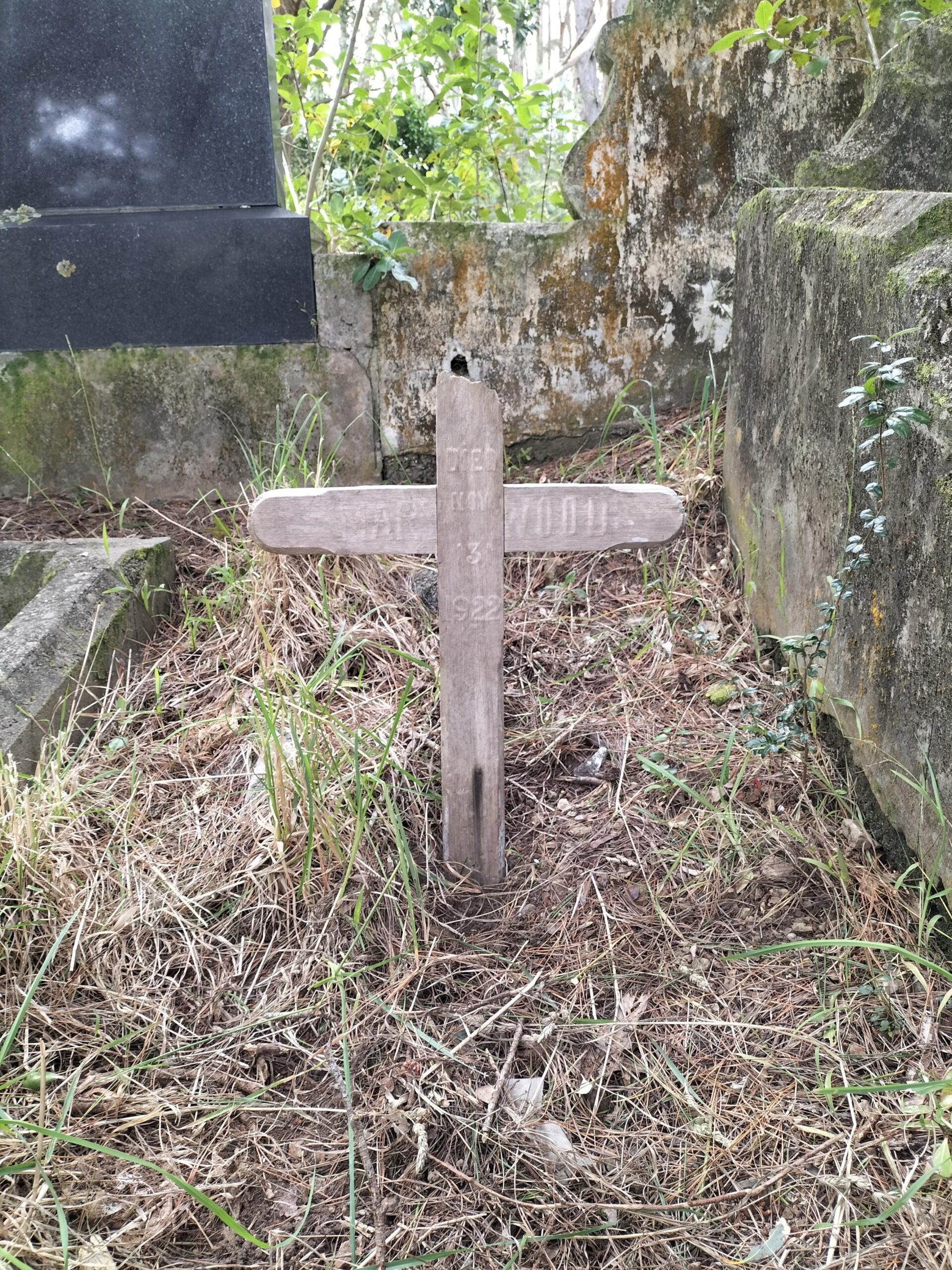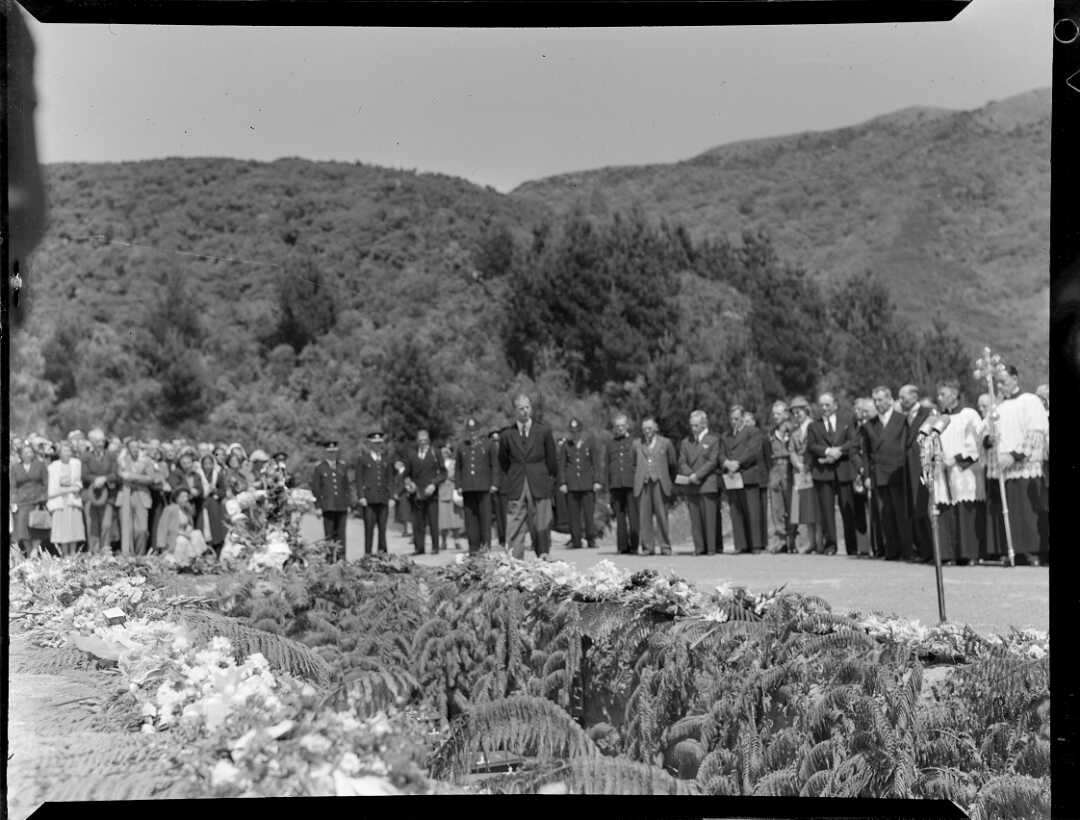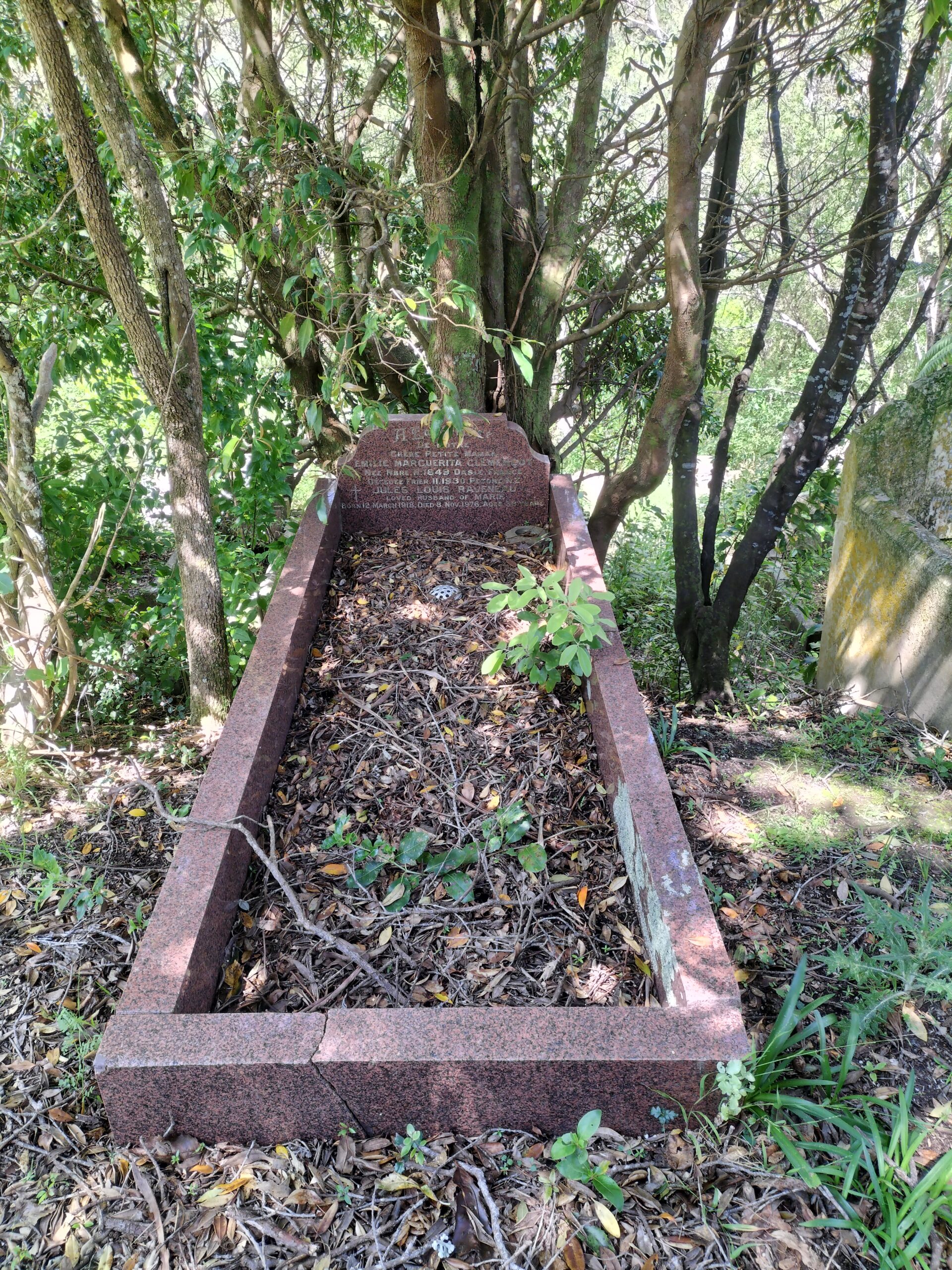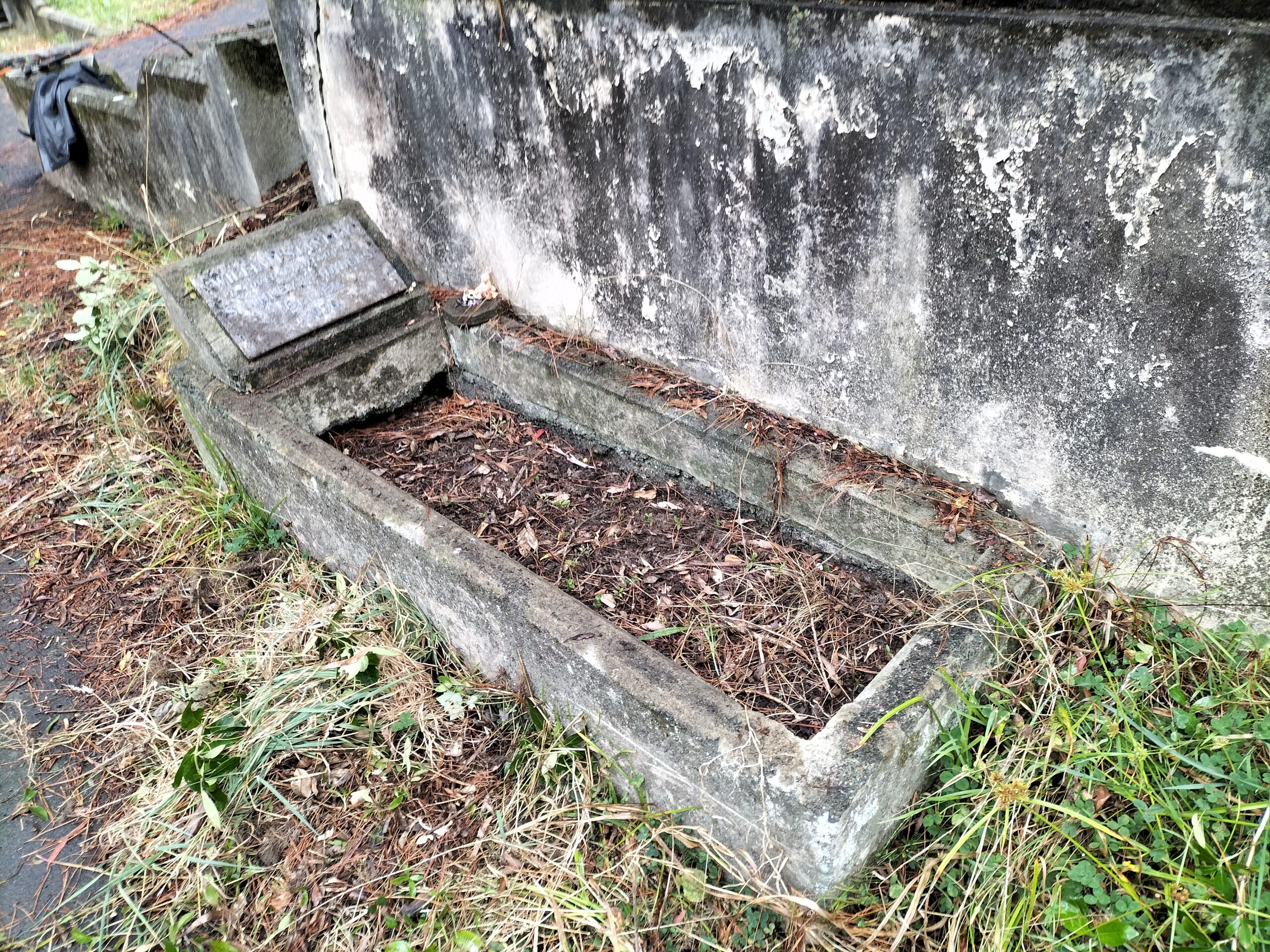One of our readers Jayce wrote in to ask if we knew what this object is on Thomas Edwards’ grave. Having examined it and done a few Google images searches,…

Mary Wood
Mary (May) Wood Mary was the daughter of John and Elizabeth Samson. She married firstly to John Douglas McNeil in 1904 in Dunedin. They had two children: John Samson and…

Fischel
Alfons Frederick Fischel was born in Prague in 1874. His profession was an engineer. He married Gisela Karmel in Vienna in 1902, their marriage was recorded in the Jewish register…

Tangiwai Funeral Service
Tangiwai Funeral Service – 31 December 1953 Seventy years ago, a funeral service was held at Karori Cemetery for the twenty-one unidentified victims of the Tangiwai disaster that occurred on…

Clemencot
In 1921, arranged by her daughter Madame Parker, Madame Emilie Marguerite Clemencot (nee Chavelle) and Madame Parker’s sister Mademoiselle Blanche Emilie Clemencot arrived in Hastings from St-Chamond, Loire, France. Madame…

New Zealand Tunneller 37663 Sergeant Victor Thomas Low (Lo Keong)
Victor Lo Keong was born in Dunedin on 3rd July 1894 to Matilda Kum (Cum Hong) and Joseph Lo Keong. Matilda is recorded as the first female Chinese immigrant to…

Company Quartermaster Sergeant 37637 Albert Baker 5th Reinforcements
Albert Baker was born in Wellington on 2nd September 1873 to Edmund John Baker (an expressman from Somerset, England), and Frances Ann Styles (from Whanganui). The family lived in Austin…

William Stanley Oliver
This tiny plot is tucked at the very end of Row K in Public2. It is for the four week old son of Stanley Oliver OBE and his wife Frances…

Menzies
This double width ‘hip tomb’ is for Duncan Robertson Menzies and his wife Dorothy. Duncan was a grandson of Isaac Featherston who after Featherston and Featherston Street are named. Dorothy…

Marco Fosella
Marco Fosella was born in Florence, Italy in 1846, the son of a distinguished engraver. He initially worked in ‘commercial pursuits’ in Paris but at the outbreak of the Franco-Prussian…

